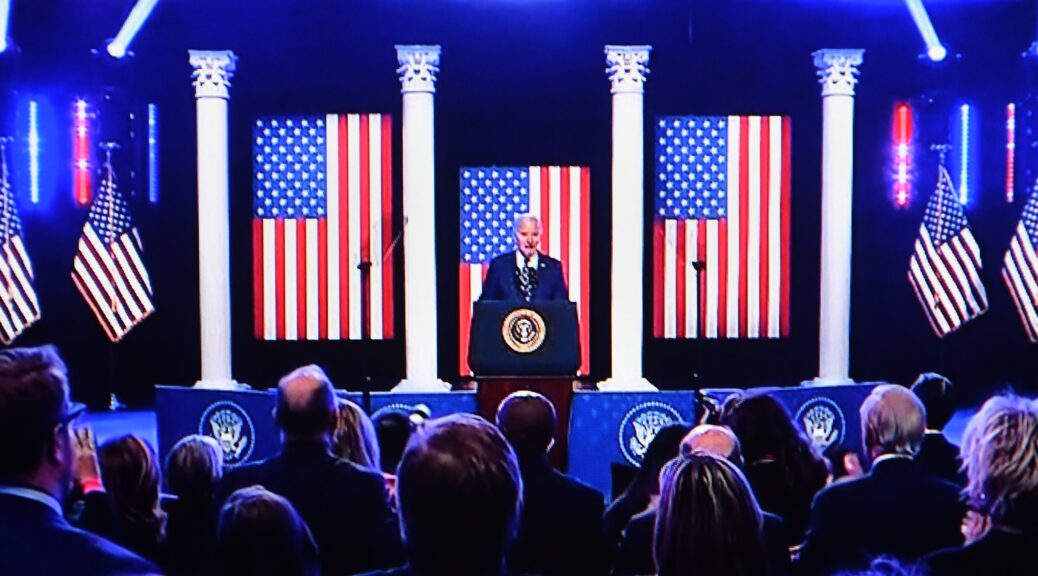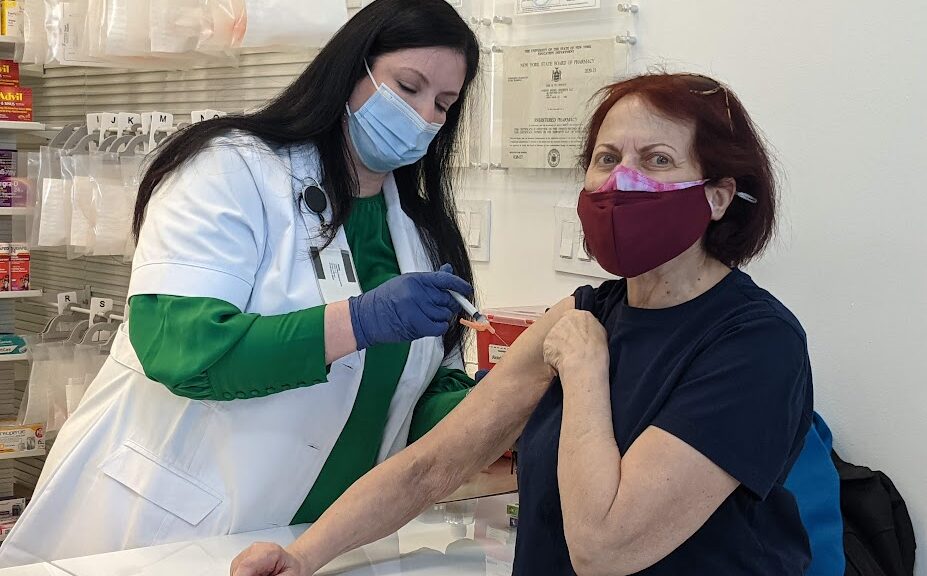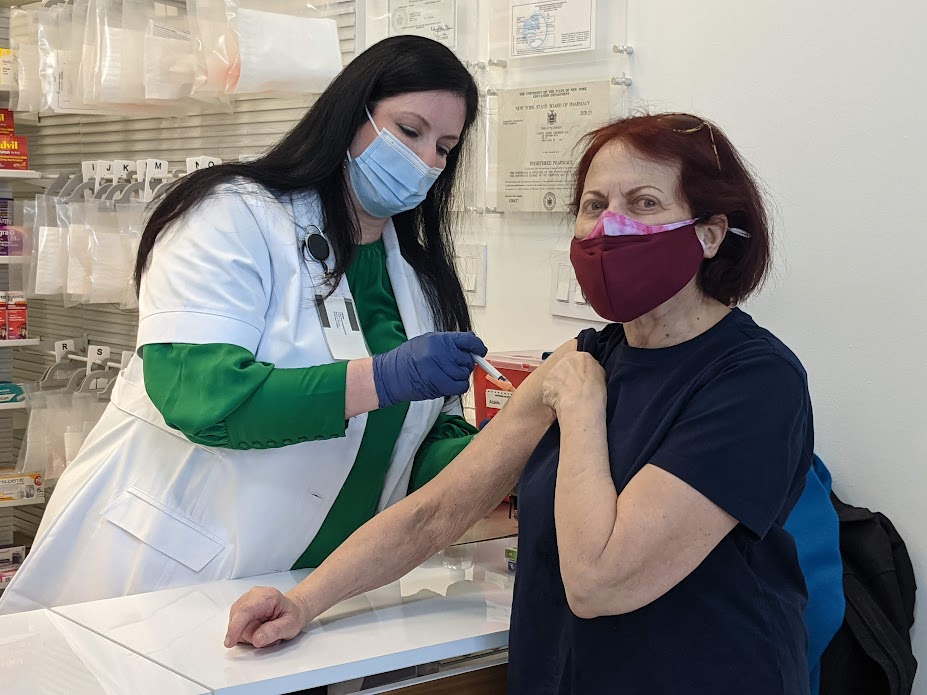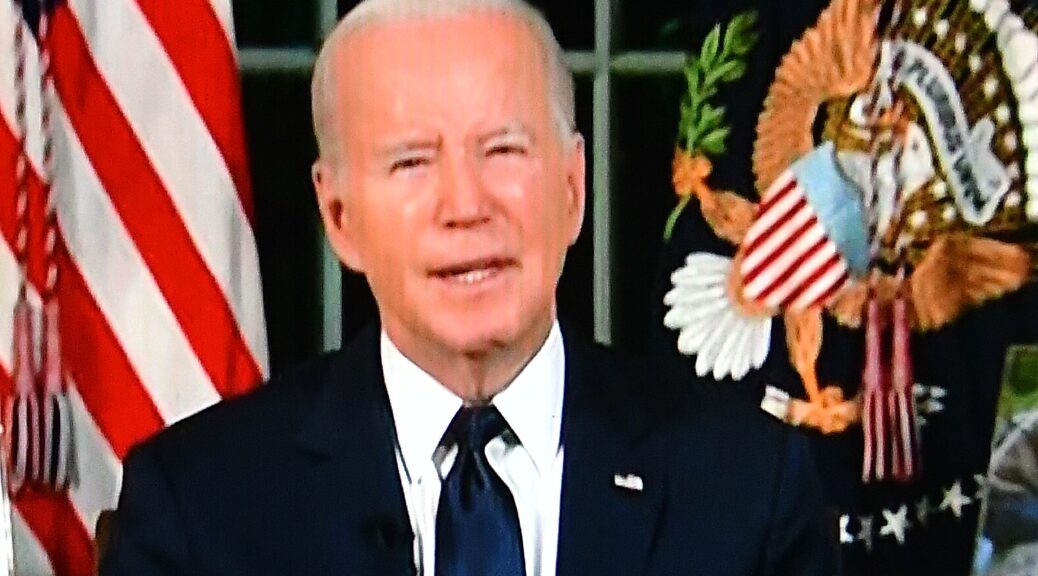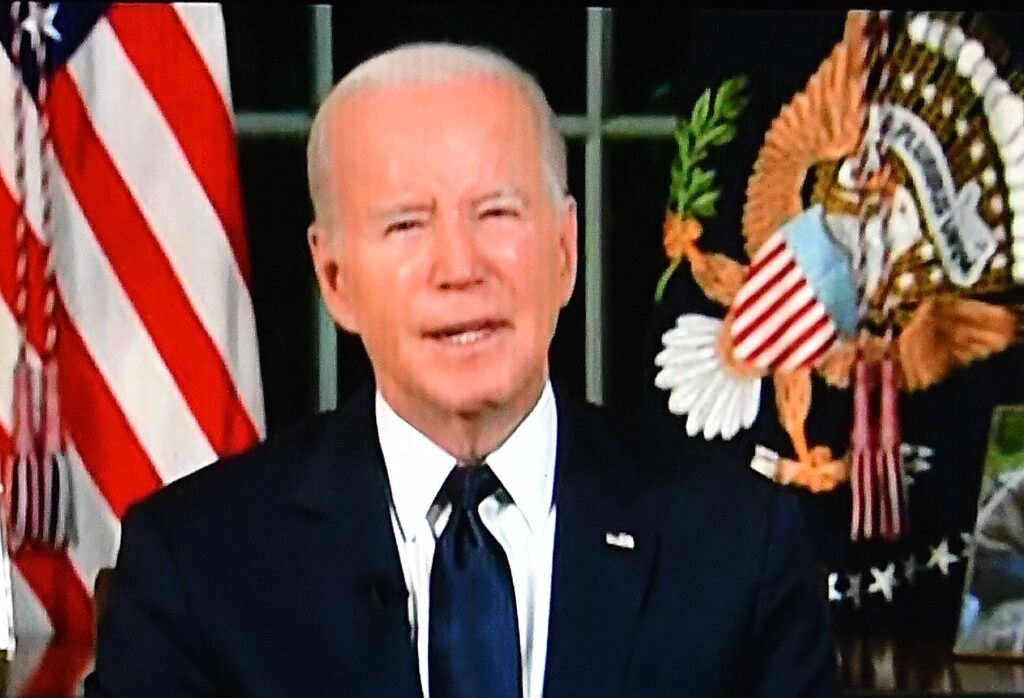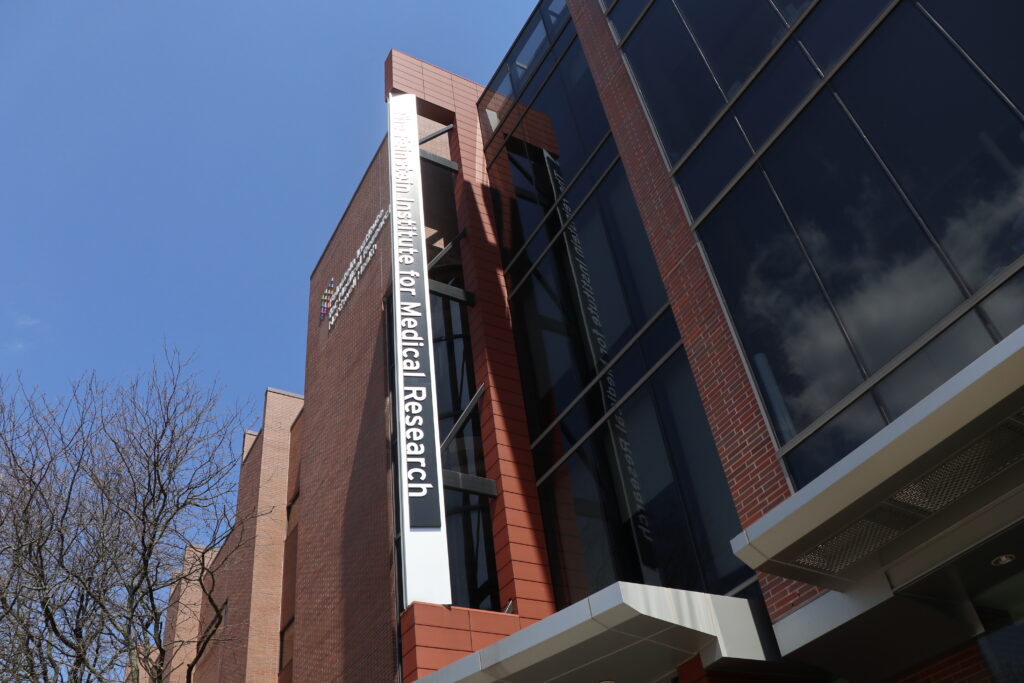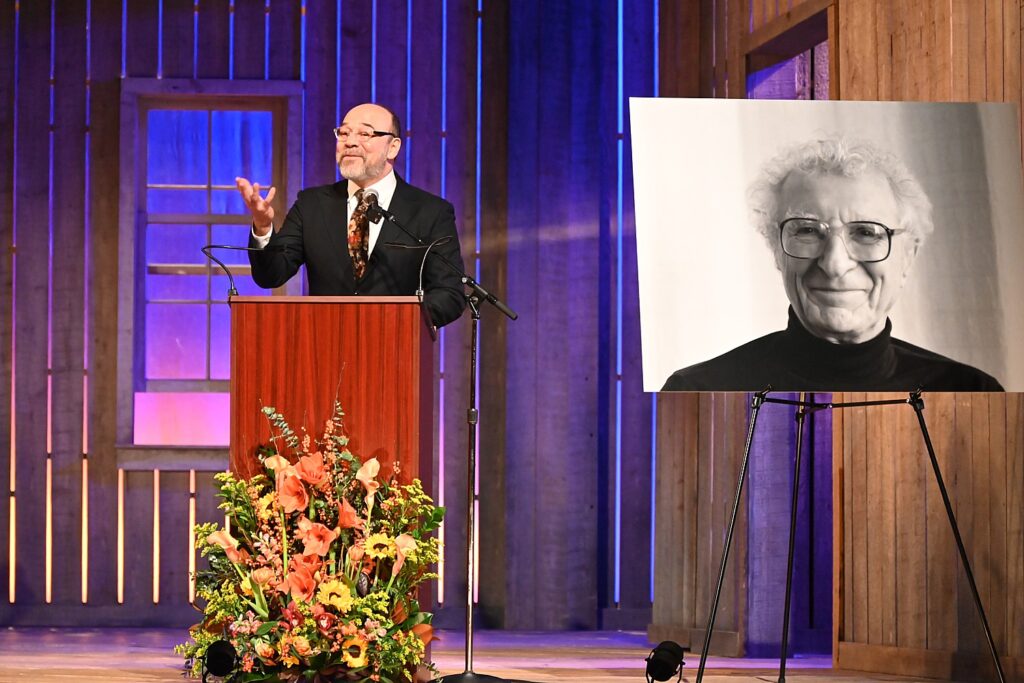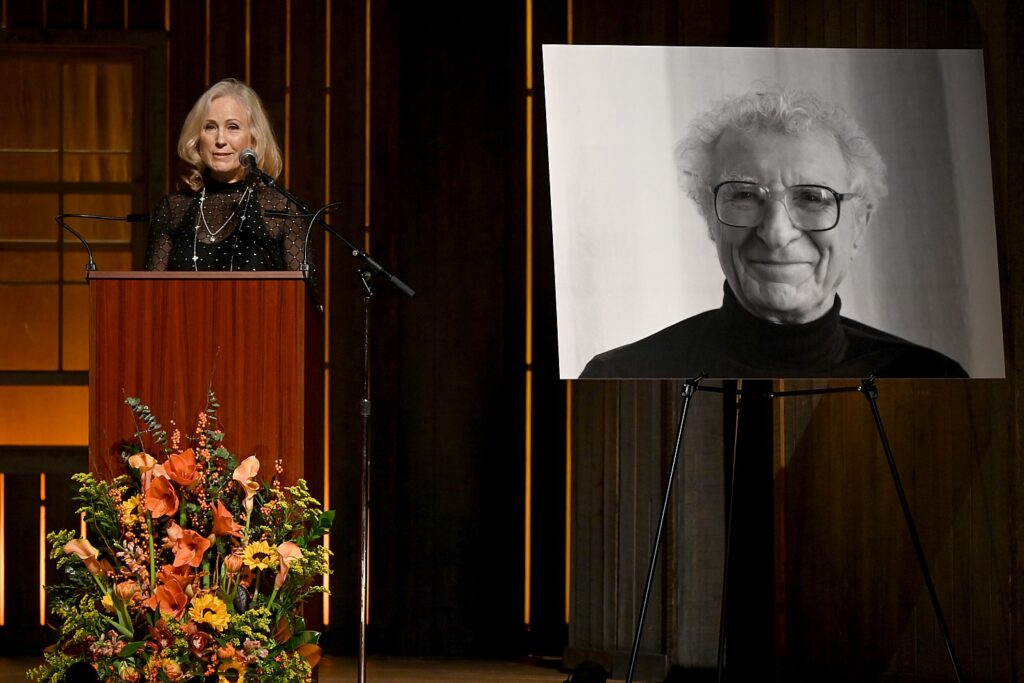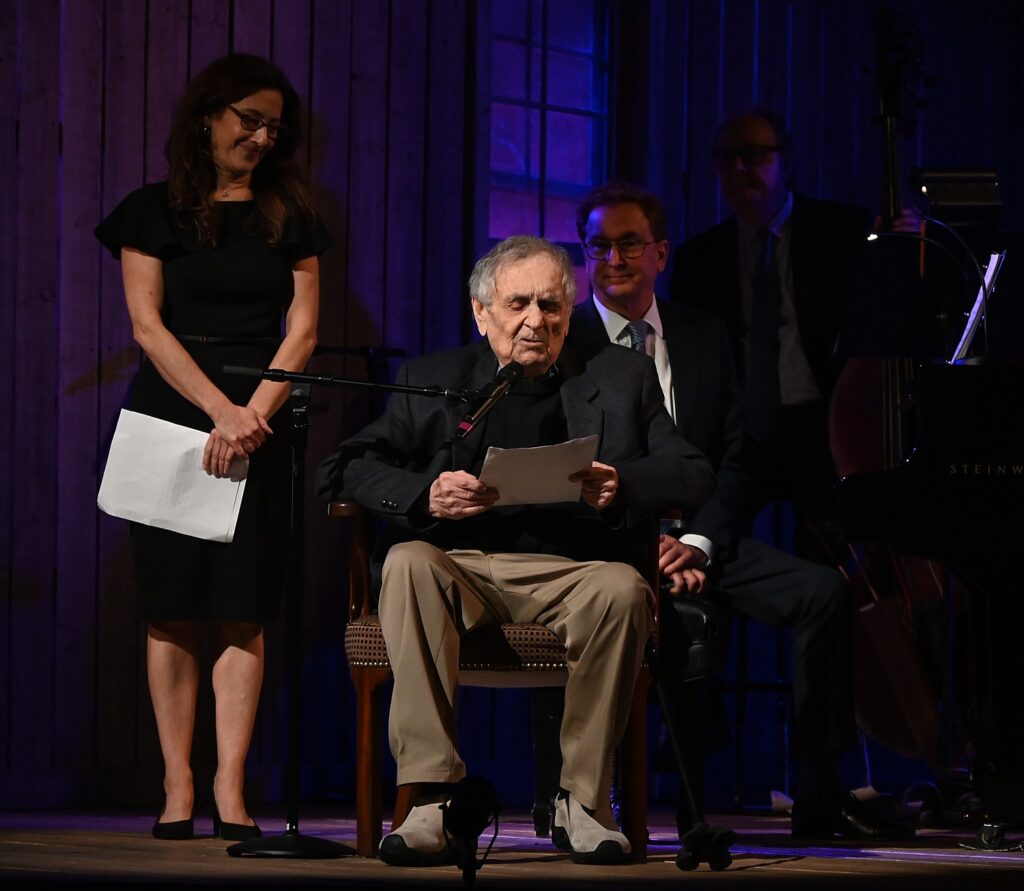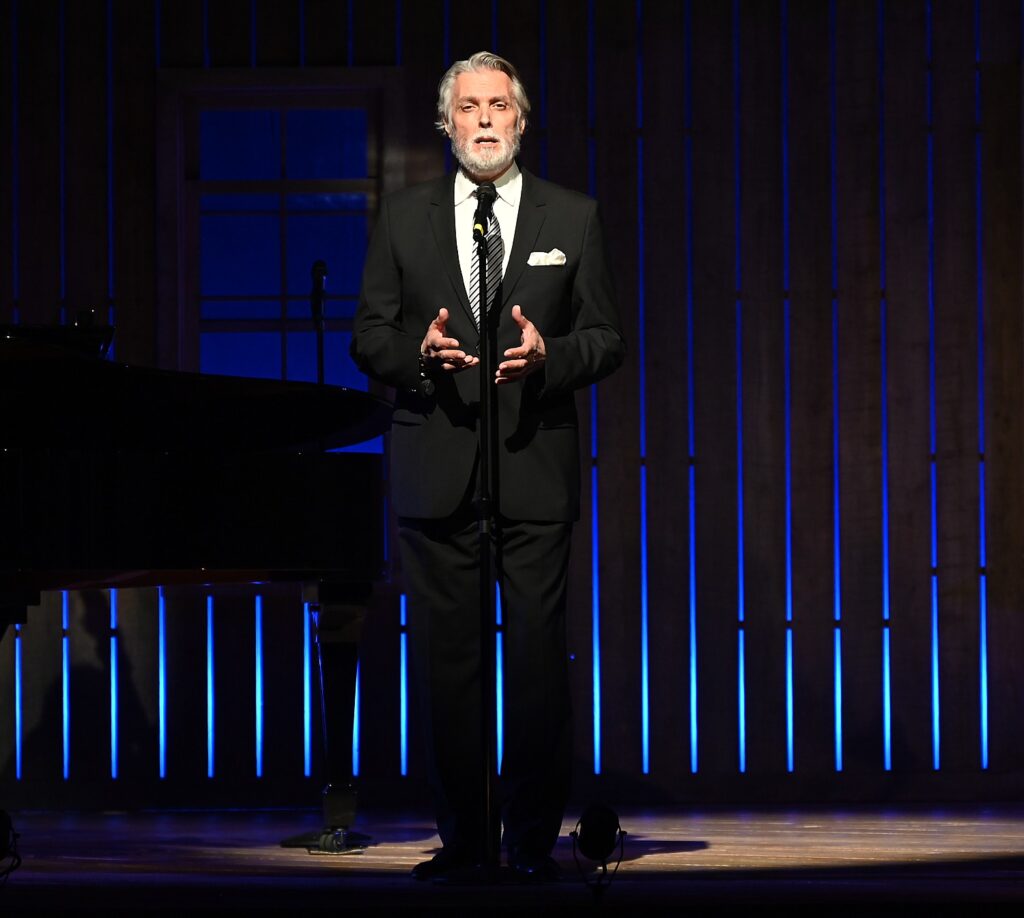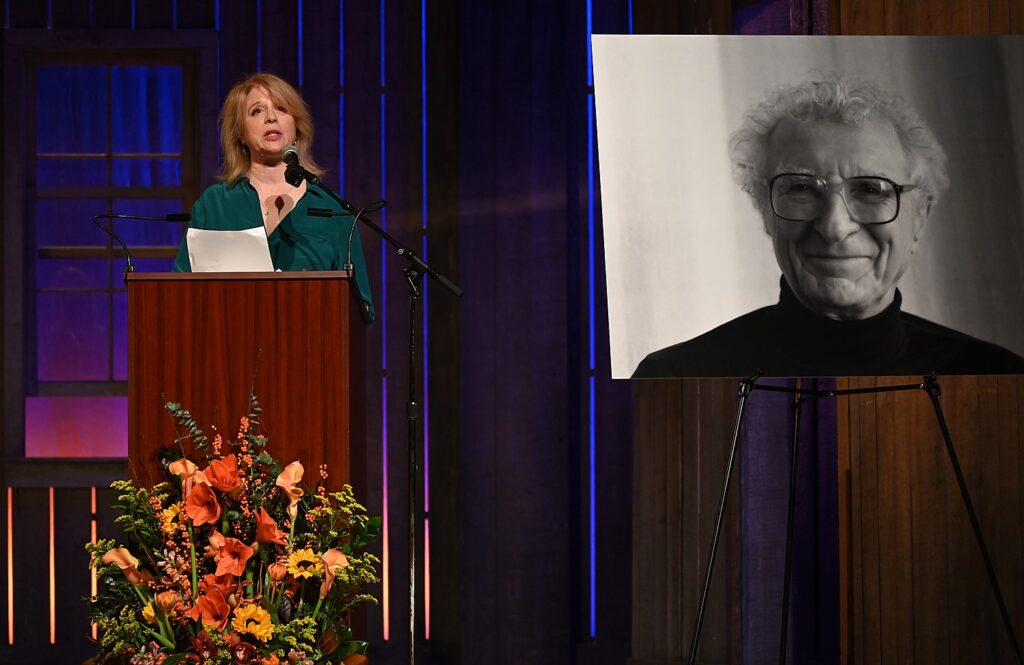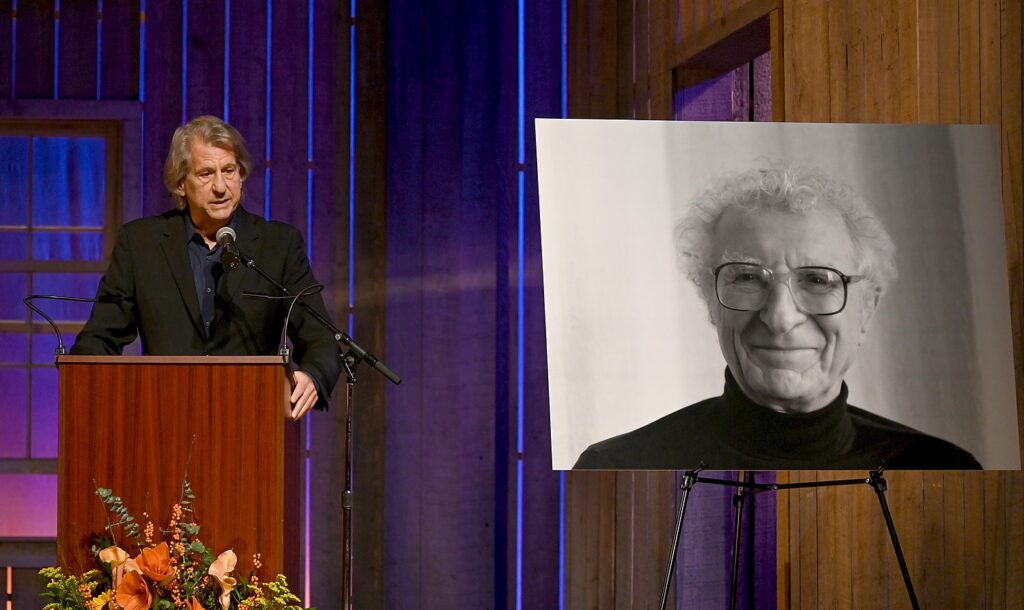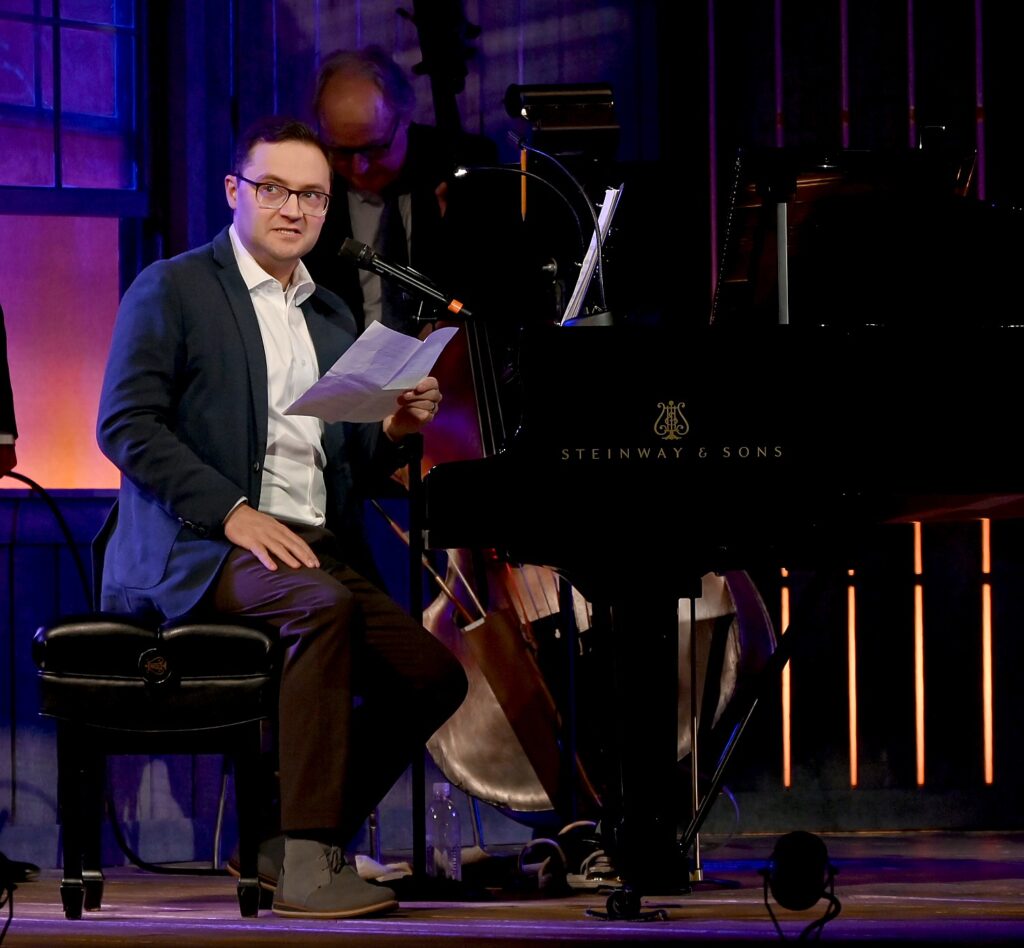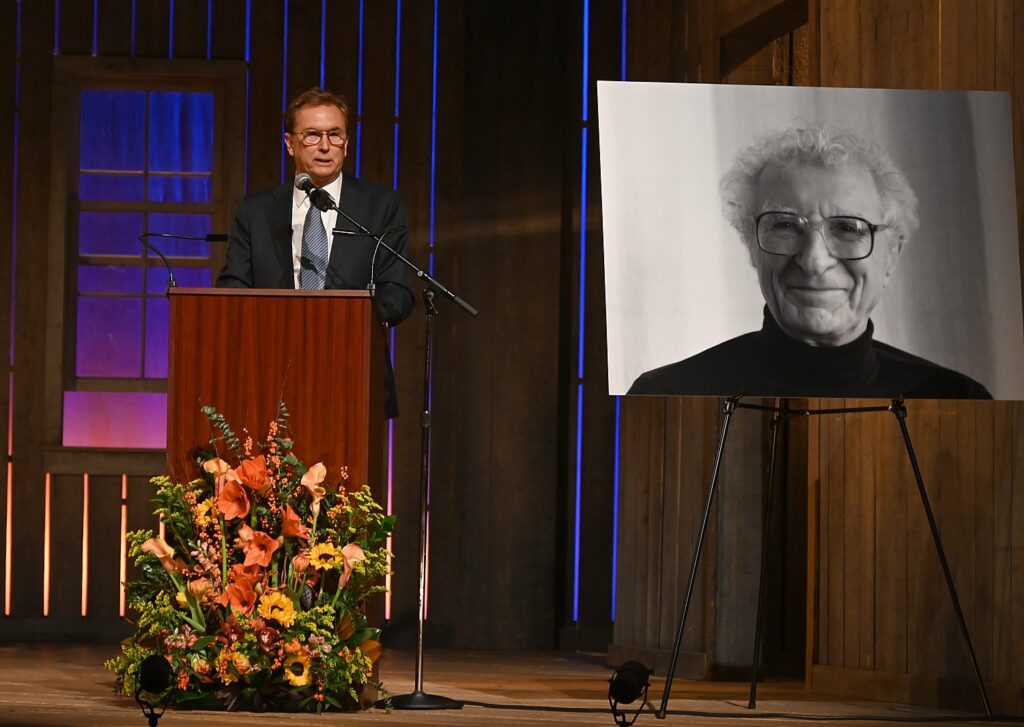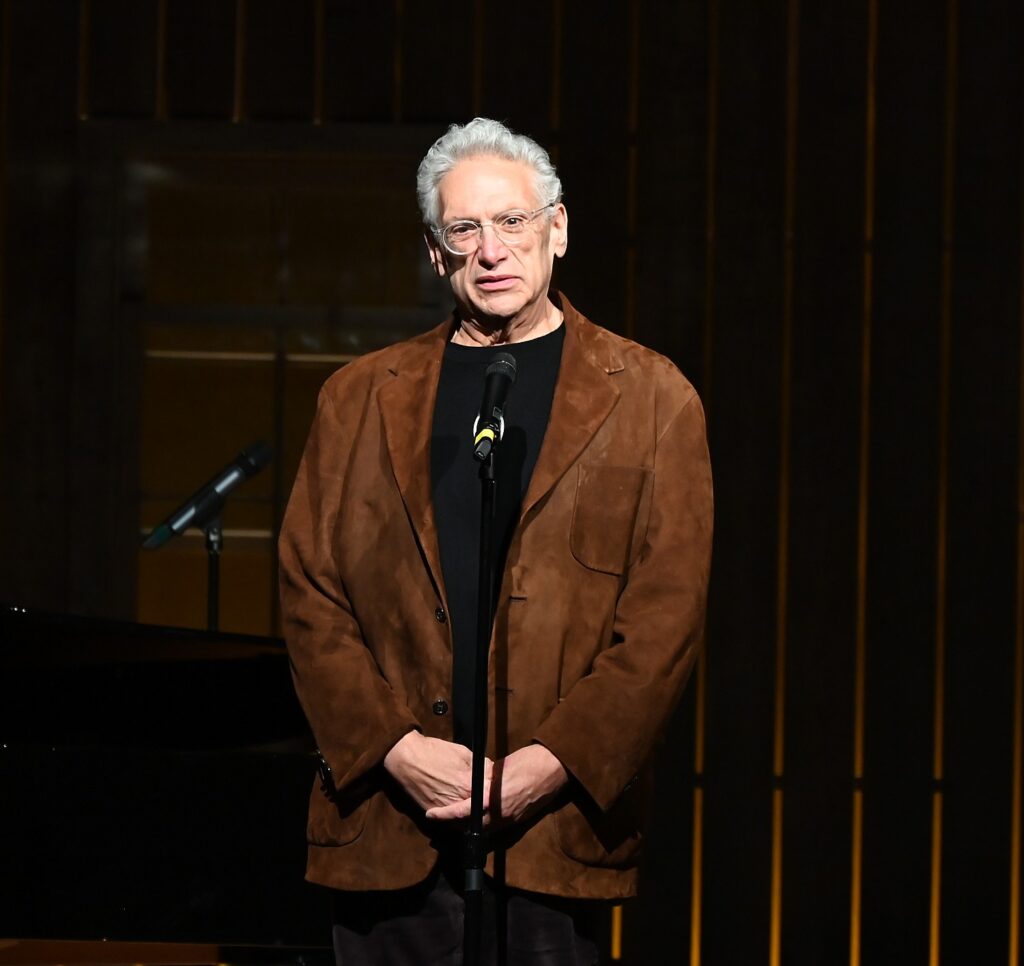
In this, President Joe Biden’s first major speech of 2024, which he delivered at Valley Forge on January 5, marking the third anniversary of the January 6th Insurrection, he highlights what is at stake in the upcoming 2024 election: nothing short of whether the United States will be ruled by democracy or a despot. “Is democracy still America’s sacred cause” he asked in what may well be considered Biden’s “Gettysburg Address.”
In contrast, Donald Trump’s first campaign speech committed himself to “retribution, revenge,” weaponizing the Department of Justice to persecute anyone who looks like they are doing well against him, literally tearing up the Constitution, enacting the Insurrection Act, pardoning the January 6 insurrectionists (he calls “hostages”) and being dictator (for the first day). And by suggesting that his own top military general be executed (for showing loyalty to the Constitution instead of him), he has laid down the gauntlet of weaponizing and routinizing political intimidation to insure his power.
As President Biden has said so many times, “this is not hyperbole” but a real call out to the existential crisis Americans must confront.
“Whether democracy is still America’s sacred cause is the most urgent question of our time, and it’s what the 2024 election is all about.” “Democracy is on the ballot. Your freedom is on the ballot.”
“Without democracy, no progress is possible. Think about it. The alternative to democracy is dictatorship — the rule of one, not the rule of ‘We the People.’”
“Democracy means having the freedom to speak your mind, to be who you are, to be who you want to be. Democracy is about being able to bring about peaceful change. Democracy — democracy is how we’ve opened the doors of opportunity wider and wider with each successive generation, notwithstanding our mistakes.”
“But if democracy falls, we’ll lose that freedom. We’ll lose the power of “We the People” to shape our destiny. If you doubt me, look around the world. Travel with me as I meet with other heads of state throughout the world.”
Here is a slightly edited, highlighted transcript of President Biden’s remarks at Valley Forge, Blue Bell, Pennsylvania, on January 5 –Karen Rubin/news-photos-features.com
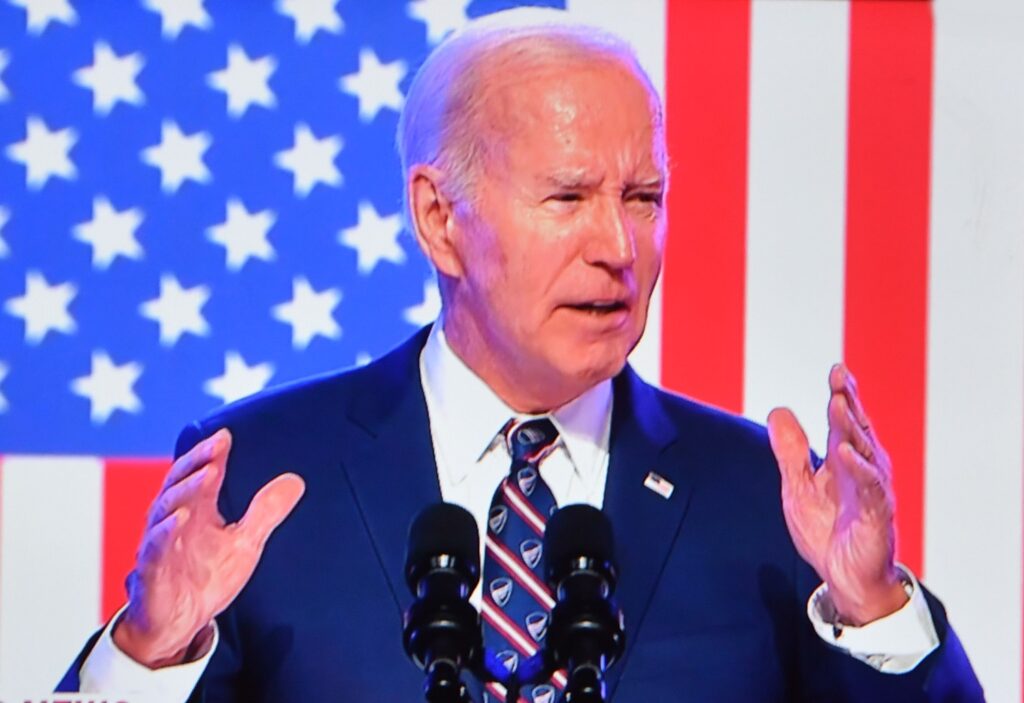
3:23 P.M. EST
THE PRESIDENT: Thank you, thank you, thank you. Thank you. (Applause.)
AUDIENCE MEMBER: Four more years! (Applause.)
THE PRESIDENT: (Laughs.) Well, thank you.
AUDIENCE: Four more years! Four more years! Four more years!
THE PRESIDENT: Thank you. Please. Thank you. Please. Thank you very, very much.
Today — the topic of my speech today is deadly serious, and I think it needs to be made at the outset of this campaign.
In the winter of 1777, it was harsh and cold as the Continental Army marched to Valley Forge. General George Washington knew he faced the most daunting of tasks: to fight and win a war against the most powerful empire that existed in the world at the time.
His mission was clear. Liberty, not conquest. Freedom, not domination. National independence, not individual glory.
America made a vow. Never again would we bow down to a king.
The months ahead would be incredibly difficult. But General Washington knew something in his bones, something about the spirit of the troops he was leading, something — something about the soul of the nation he [that] was struggling to be born.
In his general order, he predicted, and I quote, “with one heart and one mind,” “with fortitude and with patience,” they would overcome every difficulty — the troops he was leading.
And they did. They did.
This army that lacked blankets and food, clothes and shoes. This army whose march left bloody, bare footprints in the snow. This ragtag army made up of ordinary people. Their mission, George Washington declared, was nothing less than “a sacred cause.” That was the phrase used: “a sacred cause.”
Freedom, liberty, democracy. American democracy.
I just visited the grounds of Valley Forge. I’ve been there a number of times from the time I was a Boy Scout years ago. You know, it’s the very site that I think every American should visit because it tells the story of the pain and the suffering and the true patriotism it took to make America.
Today, we gather in a new year, some 246 years later, just one day before January 6th, a day forever shared in our memory because it was on that day that we nearly lost America — lost it all.
Today, we’re here to answer the most important of questions. Is democracy still America’s sacred cause? I mean it. (Applause.)
This is not rhetorical, academic, or hypothetical. Whether democracy is still America’s sacred cause is the most urgent question of our time, and it’s what the 2024 election is all about.
The choice is clear. Donald Trump’s campaign is about him, not America, not you. Donald Trump’s campaign is obsessed with the past, not the future. He’s willing to sacrifice our democracy, put himself in power.
Our campaign is different. For me and Kamala, our campaign is about America. It’s about you. It’s about every age and background that occupy this country. It’s about the future we’re going to continue to build together.
And our campaign is about preserving and strengthening our American democracy. Three years ago tomorrow, we saw with our own eyes the violent mob storm the United States Capitol. It was almost in disbelief as you first turned on the television.
For the first time on our history, insurrectionists had come to stop the peaceful transfer — transfer of power in America — first time — smashing windows, shattering doors, attacking the police.
Outside, gallows were erected as the MAGA crowd chanted, “Hang Mike Pence.”
Inside, they hunted for Speaker Pelosi [of] the House, was chanting, as they marched through and smashed windows, “Where’s Nancy?”
Over 140 police officers were injured. Jill and I attended the funeral of police officers who died as a result of the events of that day.
And because Donald — because of Donald Trump’s lies, they died because these lies brought a mob to Washington.
He promised it would be “wild,” and it was. He told the crowd to “fight like hell,” and all hell was unleashed.
He promised he would right them — right them. Everything they did, he would be side by side with them. Then, as usual, he left the dirty work to others. He retreated to the White House.
As America was attacked from within, Donald Trump watched on TV in the private small dining room off my Oval — off the Oval Office.
The entire nation watched in horror. The whole world watched in disbelief. And Trump did nothing.
Members of his staff, members of his family, Republican leaders who were under attack for the — at that very moment pled with him: “Act. Call off the mob.”
Imagine had he gone out and said, “Stop.”
And still, Trump did nothing. It was among the worst derelictions of duty by a president in American history: an attempt to overturn a free and fair election by force and violence.
A record 81 million people voted for my candidacy and to end his presidency. Trump lost the popular vote by 7 million.
Trump’s claims about the 2020 election never could stand up in court. Trump lost 60 court cases — 60. Trump lost the Republican-controlled states. Trump lost before a Trump-appointed judge — and then judges. And Trump lost before the United States Supreme Court. (Applause.) All of it, he lost.
Trump lost recount after recount after recount in state after state. But in desperation and weakness, Trump and his MAGA followers went after election officials who ensured your power as a citizen would be heard. These public servants had their lives forever upended by attacks and death threats for simply doing their jobs.
In Atlanta, Georgia, a brave Black mother and her daughter, Ruby Freeman and Shaye Moss, were doing their jobs as elected workers until Donald Trump and his MAGA followers targeted and threatened them, forcing them from their homes and unleashing racist vitriol on them. Trump’s personal lawyer, Rudy Giuliani, was just hit with $148 million judgment for cruelty and defamation that he inflicted against them.
Other state and local elected officials across the country faced similar personal attacks. In addition, Fox News agreed to pay a record $787 million for the lies they told about voter fraud.
Let’s be clear about the 2020 election. Trump exhausted every legal avenue available to him to overturn the election — every one. But the legal path just took Trump back to the truth that I had won the election and he was a loser. (Applause.)
Well, knowing how his mind works now, he had one — he had one act left — one desperate act available to him: the violence of January the 6th.
And since that day, more than 1,200 people have been charged for their assault on the Capitol. Nearly 900 of them have been convicted or pled guilty. Collectively, to date, they have been sentenced to more than 840 years in prison. (Applause.)
And what has Trump done? Instead of calling them “criminals,” he’s called these insurrectionists “patriots.” They’re “patriots.” And he promised to pardon them if he returns to office.
Trump said that there was “a lot of love” on January the 6th. The rest of the nation, including law enforcement, saw a lot of hate and violence. One Capitol police officer called it a “medieval battle.” That same officer called vile — was called vile, racist names. He said he was more afraid in the Capitol of the United States of America, in the chambers, than when he was fighting as a soldier in the war in Iraq. He said he was more afraid inside the halls of Congress than fighting in the war in Iraq.
In trying to rewrite the facts of January 6th, Trump is trying to steal history the same way he tried to steal the election. But we knew the truth because we saw it with our own eyes. It wasn’t like something — a story being told. It was on television repeatedly. We saw it with our own eyes.
Trump’s mob wasn’t a peaceful protest. It was a violent assault. They were insurrectionists, not patriots. They weren’t there to uphold the Constitution; they were there to destroy the Constitution.
Trump won’t do what an American president must do. He refuses to denounce political violence.
So, hear me clearly. I’ll say what Donald Trump won’t. Political violence is never, ever acceptable in the United States political system — never, never, never. It has no place in a democracy. None. (Applause.)
You can’t be pro-insurrectionist and pro-American.
You know, Trump and his MAGA supporters not only embrace political violence, but they laugh about it. At his rally, he jokes about an intruder, whipped up by the Big Trump Lie, taking a hammer to Paul Pelosi’s skull and echoing the very same words used on January 6th: “Where’s Nancy?”
And he thinks that’s funny. He laughed about it. What a sick — (laughter and applause). My God.
I think it’s despicable, seriously — not just for a president, for any person to say that. But to say it to the whole world listening.
When I was overseas — anyway. (Laughter.)
Trump’s assault on democracy isn’t just part of his past. It’s what he’s promising for the future. He’s being straightforward. He’s not hiding the ball.
His first rally for the 2024 campaign opened with a choir of January 6th insurrectionists singing from prison on a cell phone while images of the January 6th riot played on a big screen behind him at his rally.
Can you believe that? This is like something out of a fairy tale — a bad fairy tale.
Trump began his 2024 campaign by glorifying the failed violent insurrectionist — insurrection at our — on our Capitol.
The guy who claims law and order sows lawlessness and disorder.
Trump’s not concerned about your future, I promise you. Trump is now promising a full-scale campaign of “revenge” and “retribution” — his words — for some years to come. They were his words, not mine. He went on to say he would be a dictator on day one.
I mean, if I were writing a book of fiction and I said an American president said that, and not in jest —
He called it, and I quote, the “termination of all the rules, regulation, and articles, even those found in the U.S. Constitution,” should be terminated, if it’s his will.
It’s really kind of hard to believe. Even found in the Constitution, he could terminate?
He’s threatened the former Chairman of the Joint Chiefs of Staff with the death penalty. Says he should be put to death because the Chairman put his oath to the Constitution ahead of his personal loyalty to Trump.
This coming from a president who called — when he visited a cemetery, called dead soldiers “suckers” and “losers.” Remember that?
Sometimes, I’m really happy the Irish in me can’t be seen. (Laughter.)
It was right around the time I was at Beau’s grave, Tommy.
How dare he? Who in God’s name does he think he is?
With former aides, Trump plans to invoke the Insurrectionist Act — the Insurrection Act, which would allow him to deploy — which he’s not allowed to do in ordinary circumstances — allow him to deploy U.S. military forces on the streets of America. He said it.
He calls those who oppose him “vermin.” He talks about the blood of Americans being poisoned, echoing the same exact language used in Nazi Germany.
He proudly posts on social media the words that best describe his 2024 campaign, quote, “revenge”; quote, “power”; and, quote, “dictatorship.”
There’s no confusion about who Trump is and what he intends to do.
I placed my hand on our family Bible, and I swore an oath on the very same steps of the Capitol just 14 days after the attack on January the 6th.
As I looked out over the capital city, whose streets were lined with National Guard to prevent another attack, I saw an American that had been pushed to the brink — an America that had been pushed to the brink.
But I felt enormous pride — not in winning. I felt enormous pride in America because American democracy had been tested and American democracy had held together. And when Trump had seen weakness in our democracy and continues to talk about it, I saw strength — your strength. It’s not hyperbole. Your strength. Your integrity. American strength and integrity.
Ordinary citizens, state election officials, the American judicial system had put the Constitution first and sometimes at their peril — at their peril.
Because of them, because of you, the will of the people prevailed, not the anger of the mob or the appetites of one man.
When the attack on January 6th happened, there was no doubt about the truth. At the time, even Republican members of Congress and Fox News commentators publicly and privately condemned the attack.
As one Republican senator said, “Trump’s behavior was embarrassing and humiliating for the country.” But now, that same senator and those same people have changed their tune.
As time has gone on, politics, fear, money, all have intervened. And now these MAGA voices who know the truth about Trump on January 6th have abandoned the truth and abandoned democracy.
They made their choice. Now the rest of us — Democrats, independents, mainstream Republicans — we have to make our choice.
I know mine. And I believe I know America’s.
We will defend the truth, not give in to the Big Lie. We’ll embrace the Constitution and the Declaration, not abandon it. We’ll honor the sacred cause of democracy, not walk away from it.
Today, I make this sacred pledge to you. The defense, protection, and preservation of American democracy will remain, as it has been, the central cause of my presidency. (Applause.)
America, as we begin this election year, we must be clear: Democracy is on the ballot. Your freedom is on the ballot. (Applause.)
Yes, we’ll be voting on many issues: on the freedom to vote and have your vote counted, on the freedom of choice, the freedom to have a fair shot, the freedom from fear. And we’ll debate and disagree.
Without democracy, no progress is possible. Think about it. The alternative to democracy is dictatorship — the rule of one, not the rule of “We the People.”
That’s what the soldiers of Valley Forge understood. And so was me — was what we have to understand it as well. We’ve been blessed so long with a strong, stable democracy. It’s easy to forget why so many before us risked their lives and strengthened democracy, what our lives would be without it.
Democracy means having the freedom to speak your mind, to be who you are, to be who you want to be. Democracy is about being able to bring about peaceful change. Democracy — democracy is how we’ve opened the doors of opportunity wider and wider with each successive generation, notwithstanding our mistakes.
But if democracy falls, we’ll lose that freedom. We’ll lose the power of “We the People” to shape our destiny. If you doubt me, look around the world. Travel with me as I meet with other heads of state throughout the world.
Look at the authoritarian leaders and dictators Trump says he admires — he, out loud, says he admires. I won’t go through them all. It would take too long.
Look, remember when he refers to what he calls the “love letter” exchanges between he and the dictator of North Korea? Those women and men out there in the audience who ever fought for the American military, would you ever believe you’d hear a president say something like that?
His admiration for Putin — I can go on.
And look at what these autocrats are doing to limit freedom in their countries. They’re limiting freedom of speech, freedom of press, freedom to assemble, women’s rights, LGB[T]Q rights, people are going to jail, so much more.
It’s true: The push and pull of American history is not a fairy tale. Every stride forward in America is met with a ferocious backlash, many times from those who fear progress and those who exploit that fear for their own personal gain; from those who traffic in lies told for power and profit; from those who are driven by grievance and grift, consumed by conspiracy and victimhood; from those who seek to bury history and ban books.
Did you ever think you’d be at a political event talking about book banning for in a presidential election?
The choice and contest between those forces — those competing forces, between solidarity and division — is perennial. But this time, it’s so different.
You can’t have a contest — you can’t have a contest if you see politics as an all-out war instead of a peaceful way to resolve our differences. All-out war is what Trump wants.
That’s why he doesn’t understand the most fundamental truth about this country. Unlike other nations on Earth, America is not built on ethnicity, religion, geography. We’re the only nation in the history of the world built on an idea — not hyperbole — built on an idea: “We hold these truths to be self-evident, that all men and women are created equal.”
It’s an idea declared in the Declaration, created in a way that we viewed everybody as equal and be — should be treated equally throughout their lives.
We’ve never fully lived up to that. We have a long way to go. But we’ve never walked away from the idea. We’ve never walked away from it before. But I promise you, I will not let Donald Trump and the MAGA Republicans — (applause) — force us to walk away now.
We’re living in an era where a determined minority is doing everything in its power to try to destroy our democracy for their own agenda. The American people know it, and they’re standing bravely in the breach.
Remember, after 2020, January 6th insurrection to undo the election in which more Americans had voted than any other in American history? America saw the threat posed to the country, and they voted him out. In 2022, historic midterm election, in state after state, election after election, the election deniers were defeated.
Now, in 2024, Trump in running as the “denier-in-chief” — the election denier-in-chief. Once again, he’s saying he won’t honor the results of the election if he loses.
Trump says he doesn’t understand. Well, he still doesn’t understand the basic truth, and that is you can’t love your country only when you win. (Applause.) You can’t love your country only when you win.
So, I’ll keep my commitment to be president for all of America, whether you voted for me or not. I’ve done it for the last three years, and I’ll continue to do it.
Together, we can keep proving that America is still a country that believes in decency, dignity, honesty, honor, truth. We still believe that no one, not even the President, is above the law. We still believe — (applause) — the vast majority of us still believe that everyone deserves a fair shot at making it. We’re still a nation that gives hate no safe harbor.
I tell you from my experience working with leaders around the world — and I mean this sincerely, not a joke — that America is still viewed as the beacon of democracy for the world.
I can’t tell you how many — how many world leaders — and I know all of them, virtually all of them — grab my arm in private and say, “He can’t win. Tell me. No, my country will be at risk.”
Think of how many countries, Tommy, you know that are on the on the edge. Imagine.
We still believe in “We the People,” and that includes all of us, not some of us.
Let me close with this. On that cold winter of 1777, George Washington and his American troops at Valley Forge waged a battle on behalf of a revolutionary idea that everyday people — like where I come from and the vast majority of you — not a king or a dictator — that everyday people can govern themselves without a king or a dictator.
In fact, in the rotunda of the Capitol, there’s a giant painting of General George Washington — not President Washington — and he is resigning his commission as Commander-in-Chief of the Continental Army.
A European king at this — at the time said, after he won the revolution, “Now is the time for him to declare his kingship.”
But instead, the mob that attacked the Capitol, waving Trump flags and Confederate flags, stormed right past that portrait. That image of George Washington gave them no pause, but it should have.
The artist that painted that portrait memorialized that moment because he said it was, quote, “one of the highest moral lessons ever given to the world.” End of quote.
George Washington was at the height of his power. Having just defeated the most powerful empire on Earth, could have held onto the power as long as he wanted. He could have made himself not a future president but a future monarch, in effect.
And, by the way, when he got elected president, he could have stayed for two, three, four, five terms, until he died. But that wasn’t the America he and the American troops at Valley Forge had fought for.
In America, genuine leaders — democratic leaders, with a small “d” — don’t hold on to power relentlessly. Our leaders return power to the people. And they do it willingly, because that’s the deal. You do your duty. You serve your country.
And ours is a country worthy of service, as many Republican presidents and Democratic presidents have shown over the years.
We’re not perfect. But at our best, we face on — we face head on the good, the bad, the truth of who we are. We look in the mirror and ultimately never pretend we’re something we’re not. That’s what great nations do. And we’re a great nation. We’re the greatest nation on the face of the Earth. We really are. (Applause.)
That’s the America I see in our future. We get up. We carry on. We never bow. We never bend. We speak of possibilities, not carnage. We’re not weighed down by grievances. We don’t foster fear. We don’t walk around as victims.
We take charge of our destiny. We get our job done with the help of the people we find in America, who find their place in the changing world and dream and build a future that not only they but all people deserve a shot at.
We don’t believe — none of you believe America is failing. We know America is winning. That’s American patriotism. (Applause.)
And it’s not winning because of Joe Biden. It’s winning.
This is the first national election since January 6th insurrection placed a dagger at the throat of American democracy — since that moment. We all know who Donald Trump is. The question we have to answer is: Who are we? That’s what’s at stake. (Applause.) Who are we?
In the year ahead, as you talk to your family and friends, cast your ballots, the power is in your hands. After all we’ve been through in our history, from independence to Civil War to two world wars to a pandemic to insurrection, I refuse to believe that, in 2024, we Americans will choose to walk away from what’s made us the greatest nation in the history of the world: freedom, liberty. (Applause.)
Democracy is still a sacred cause. And there’s no country in the world better positioned to lead the world than America.
That’s why — (applause) — I’ve said it many times. That’s why I’ve never been more optimistic about our future. And I’ve been doing this a hell of a long time. (Laughter.)
Just have to remember who we are — with patience and fortitude, with one heart. We are the United States of America, for God’s sake. (Applause.)
I mean it. There is nothing — I believe with every fiber that there is nothing beyond our capacity if we act together and decently with one another. Nothing, nothing, nothing. (Applause.) I mean it.
We’re the only nation in the world that’s come out of every crisis stronger than we went into that crisis. That was true yesterday and it’s true today, and I guarantee you will be true tomorrow.
God bless you all. And may God protect our troops. (Applause.)
Thank you. Thank you.
(The First Lady joins the President onstage.) I understand power. (Laughter.)
Thank you all so very much. (Inaudible.) Thank you, thank you, thank you. (Applause.)
3:56 P.M. EST

